If you ever had asiago cheese bread from Panera Bread and had their asiago bagels, you’ll likely appreciate this recipe. This is not meant to be a copycat recipe, but rather an inspired one. As much as I love the bagels from the restaurant, the bake has always been inconsistent. Sometimes, you come home with the perfect bagel. Other times, you come home with raw dough. This isn’t a chewier bread like bagels, but rather a softer texture that reminds you of pillowy dinner rolls.
This recipe combines the taste of asiago with the tang of buttermilk. Appalachian cooking relies on the use of this ingredient a lot. The buttermilk gives a softness to bread and saves money as do not need to use butter in the baking. If you do not have buttermilk, regular milk will be great, too.
Asiago is one of my favorite cheeses to bake with because of the zesty tang and lower moisture content. When you bake with a high moisture cheese like fresh mozzarella, you risk the cheese erupting and making a mess in your oven. By using the aged, harder cheeses, you can use less cheese and pack in more flavor and less risk of a dripping mess of burnt cheese stuck to the bottom of your oven floor.
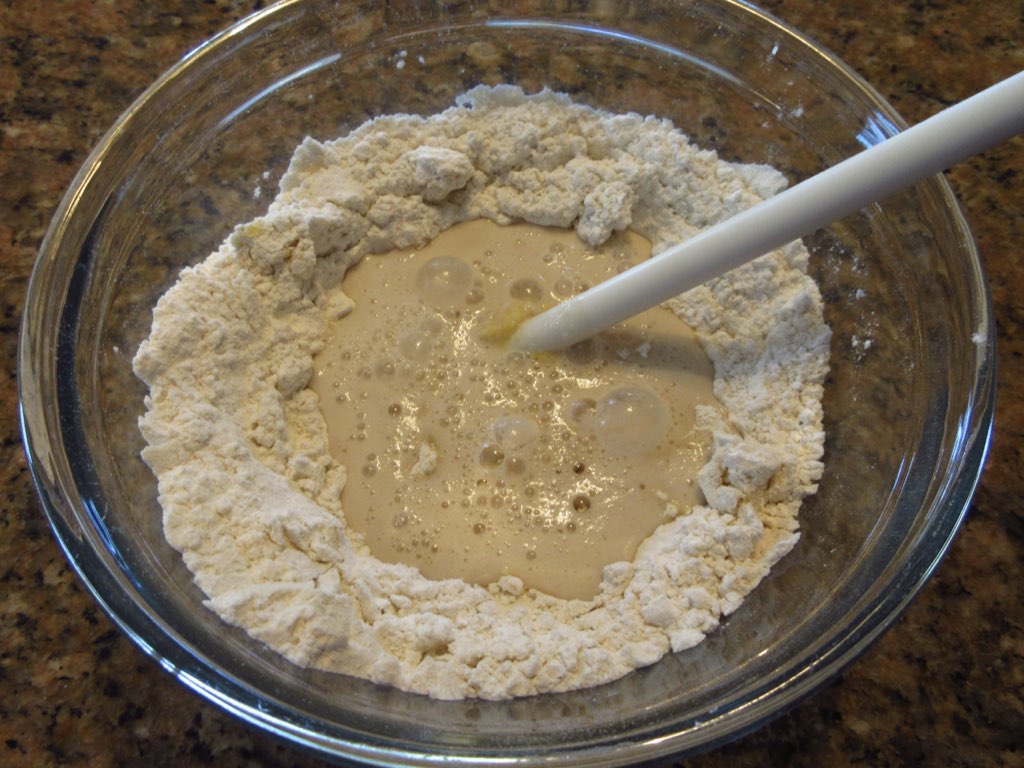
Add all your ingredients to a bowl. 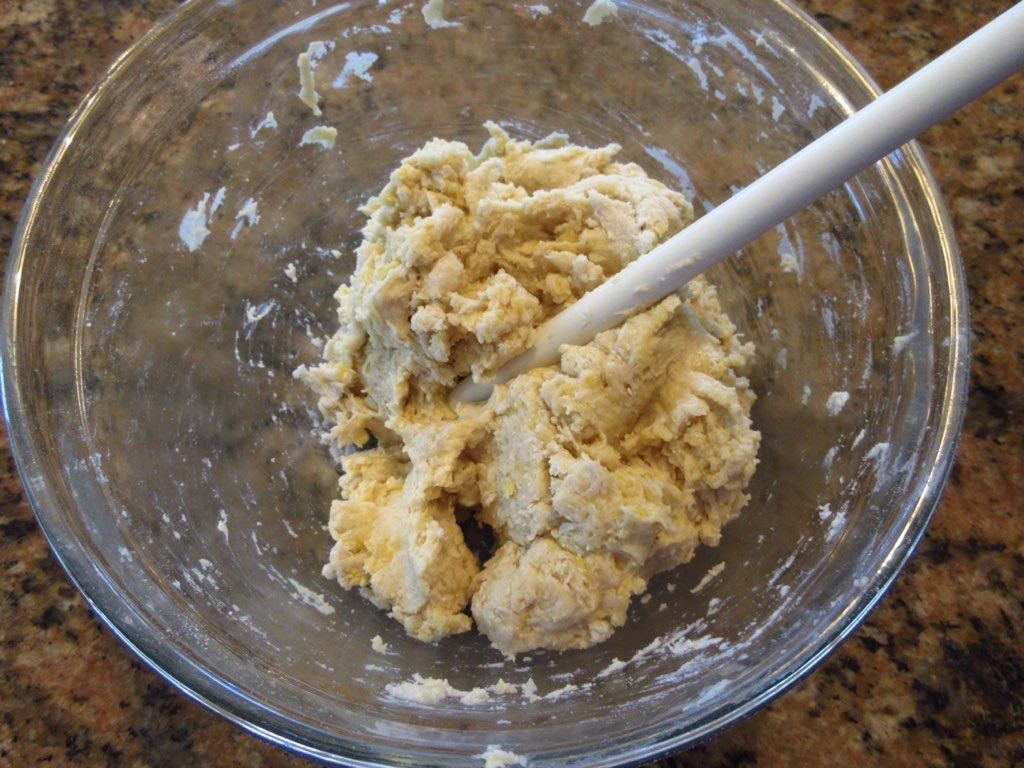
Stir until you can’t stir anymore. 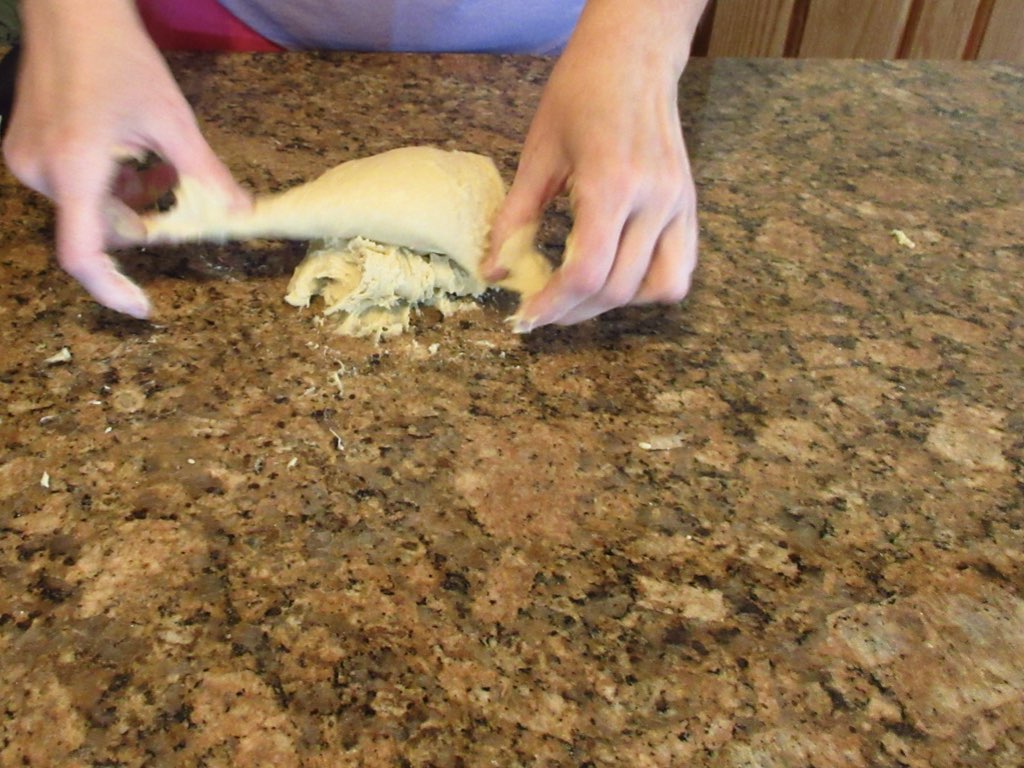
Knead for 8-10 minutes. 
It won’t take long until it’s smooth. 
Shape into a ball. 
Cover and rest 60-120 minutes. 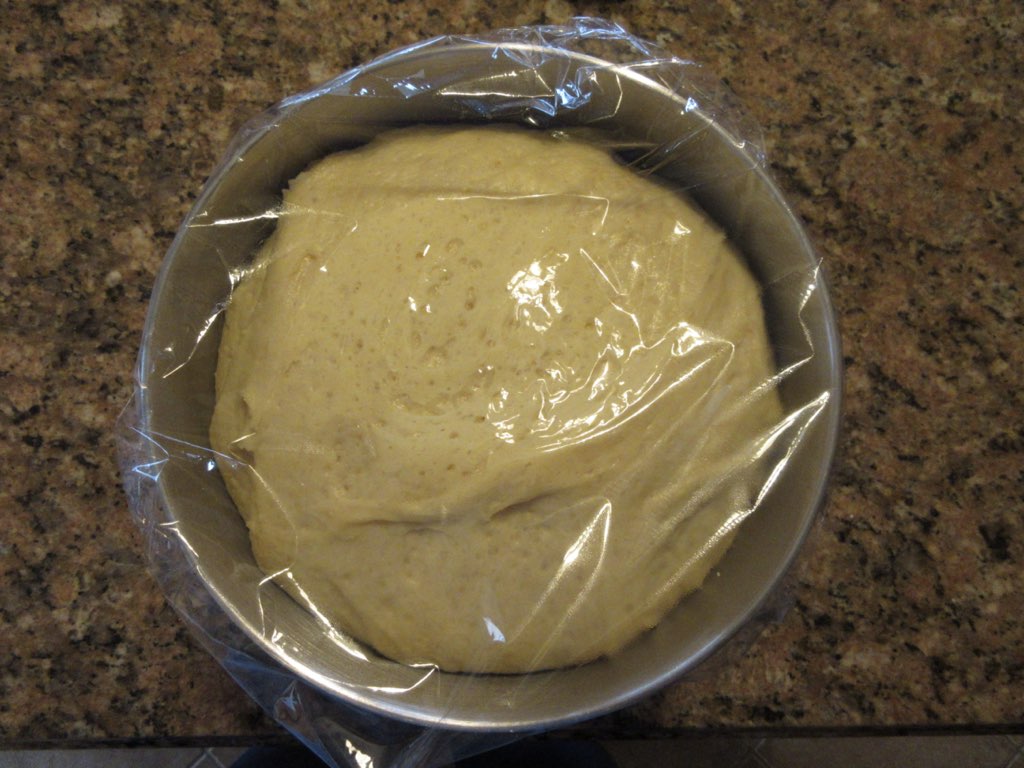
It should be roughly double. 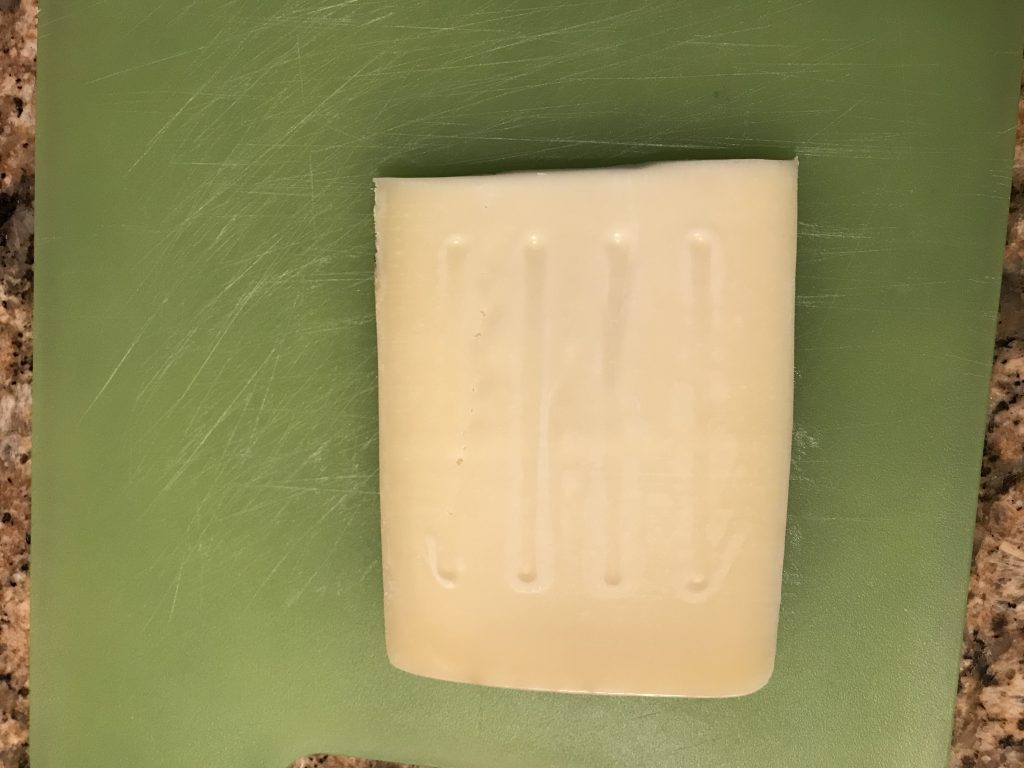
After risen, cube or shred cheese. 
Cubes will be seen easier but shredded gives more flavor throughout. 
Turn out the dough. 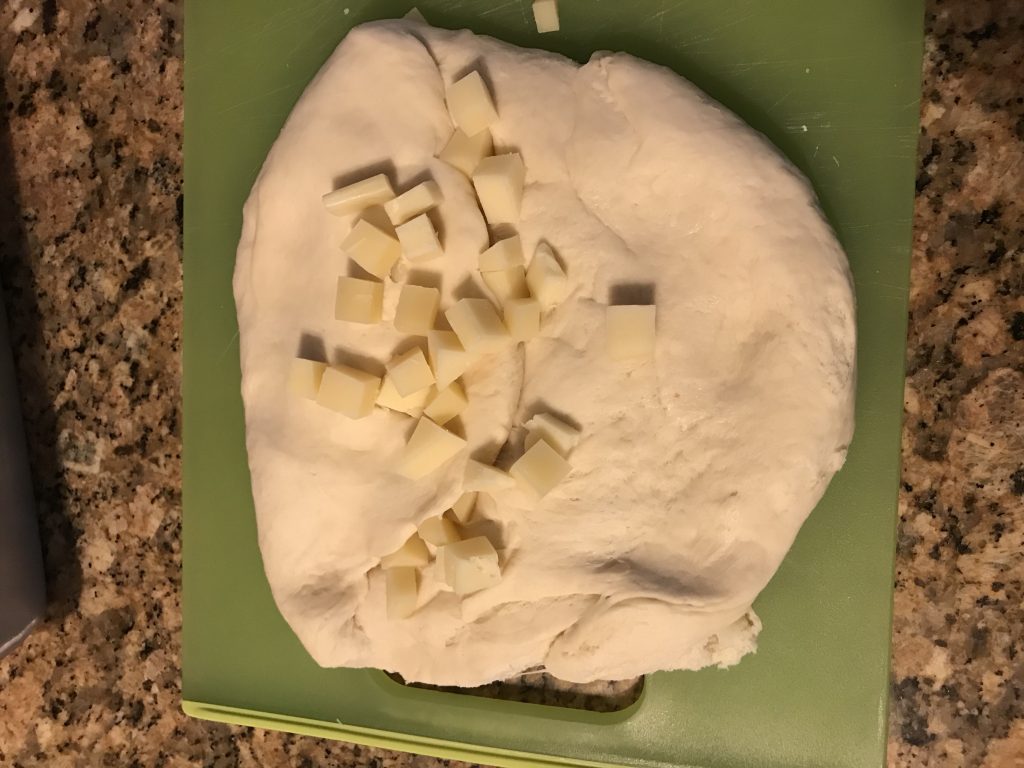
Flatten into a rough rectangle. 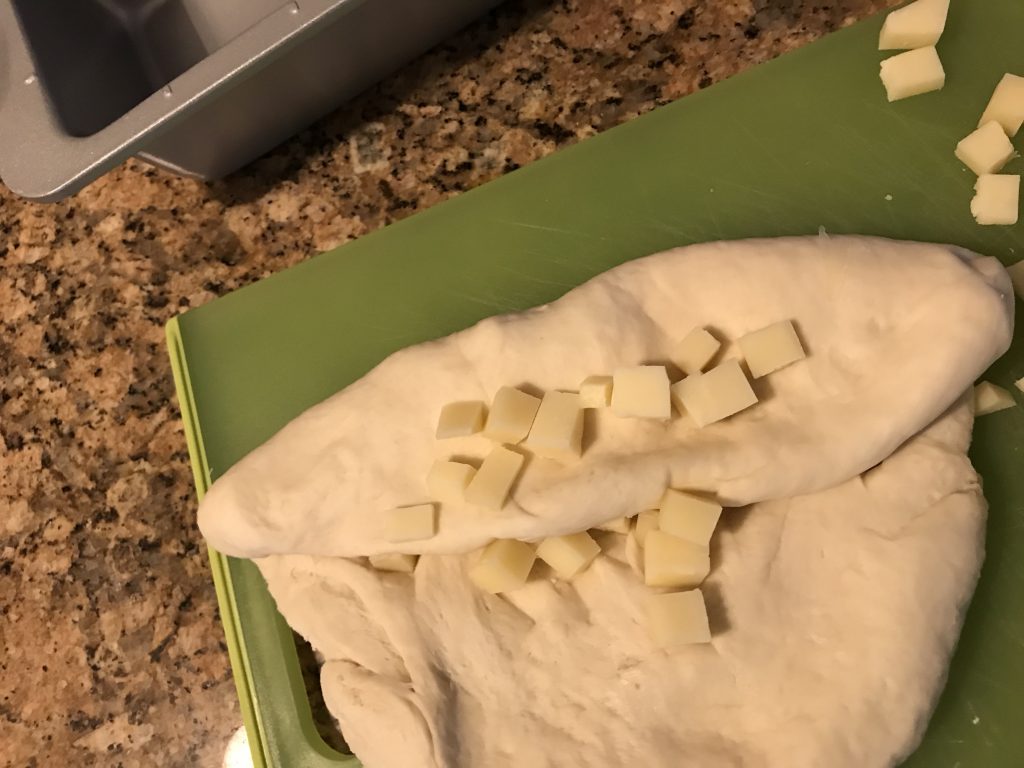
Begin layering cheese and rolling it up as you go. 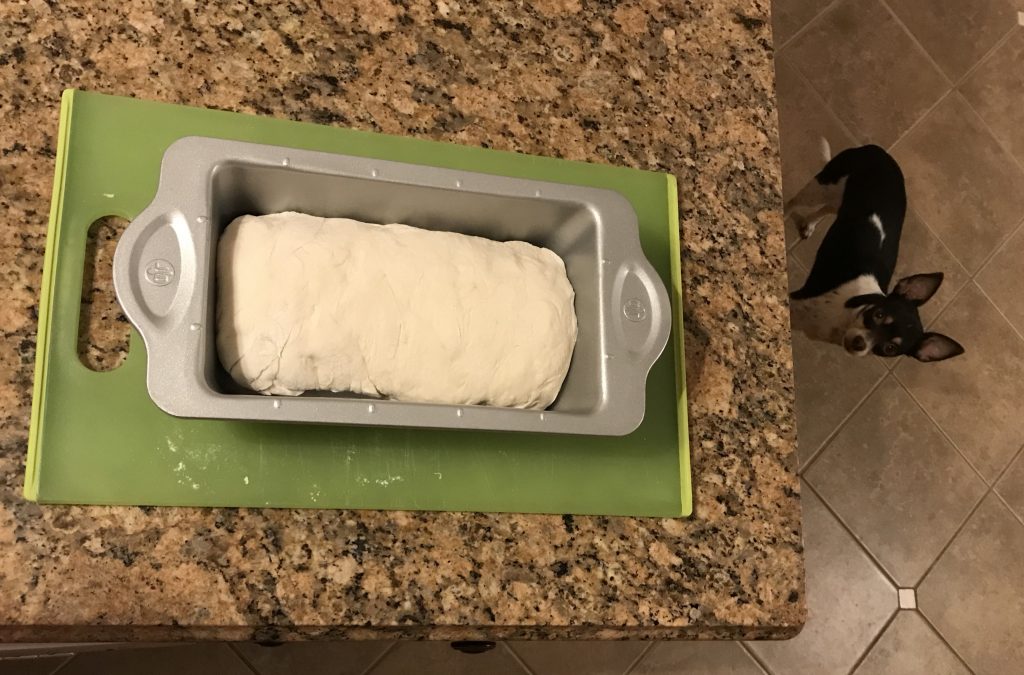
Place it seam side down in a loaf pan. Also, say hi to Jackson! 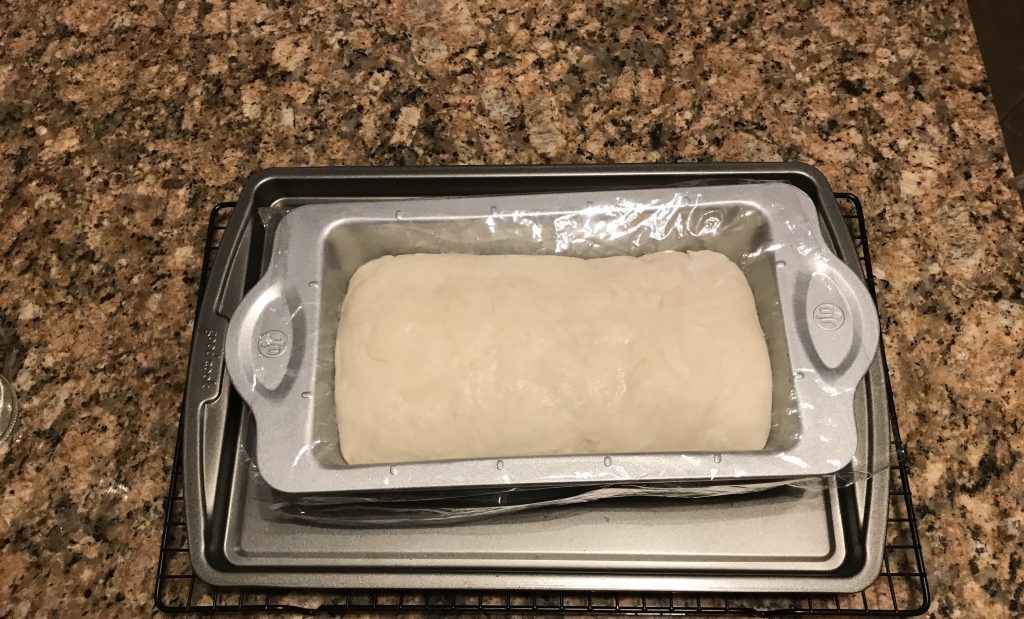
Cover. 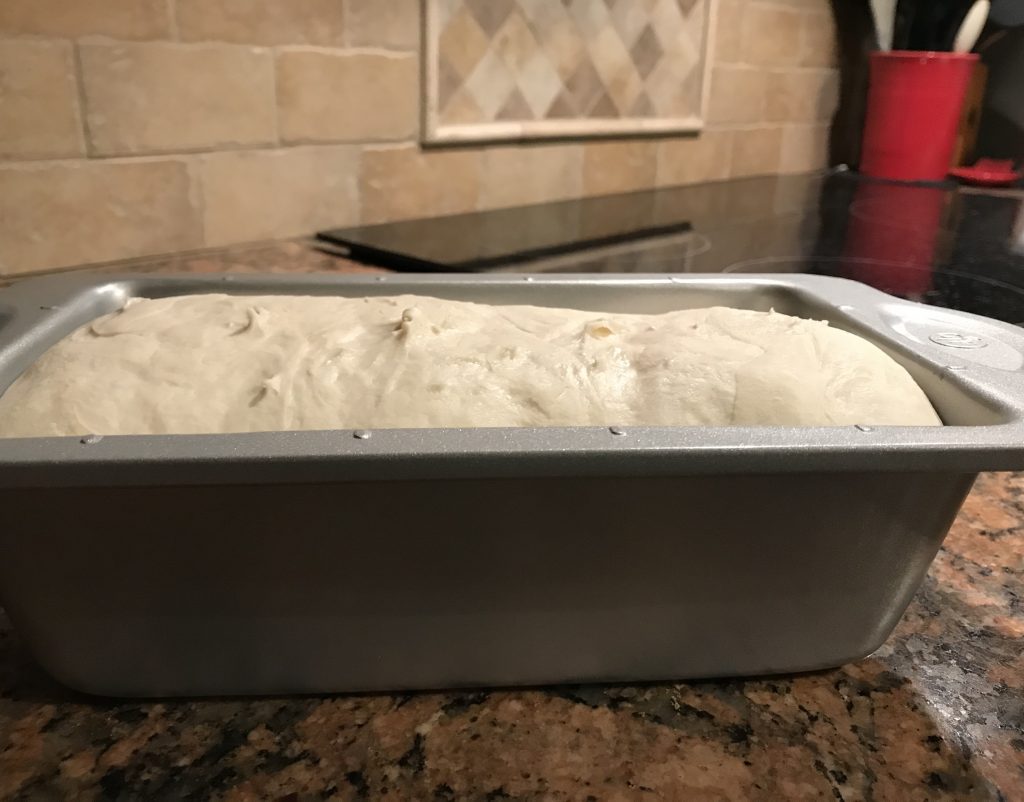
Let it rise at least until it reaches the top of the pan. 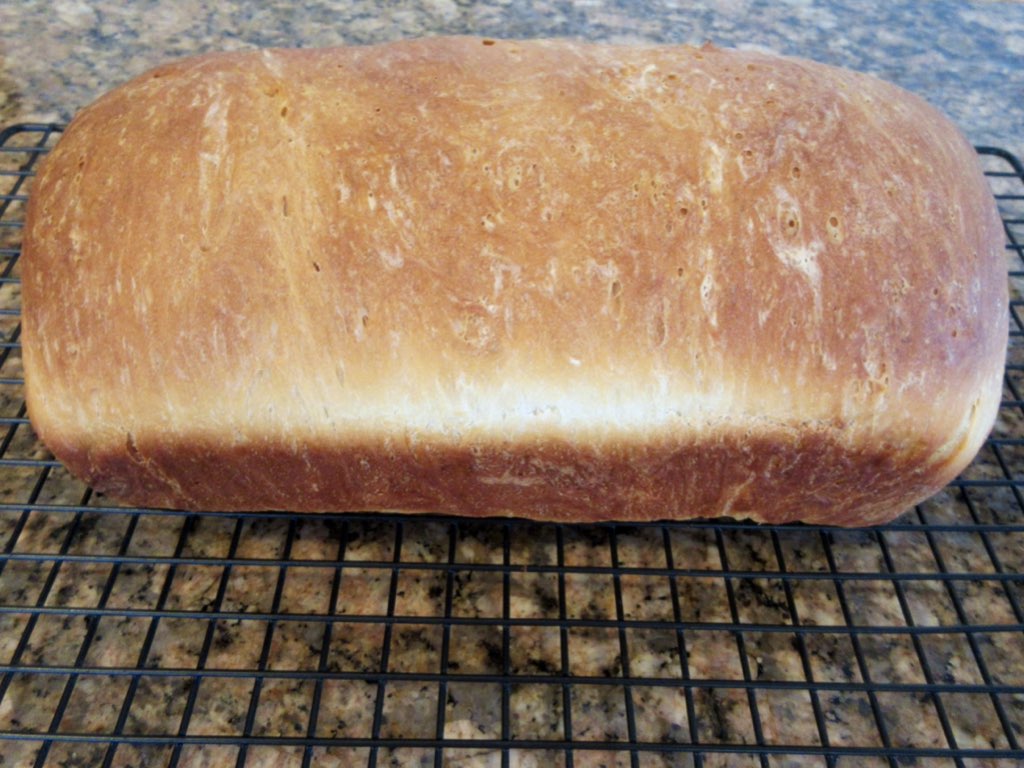
Bake and cool complete before slicing. 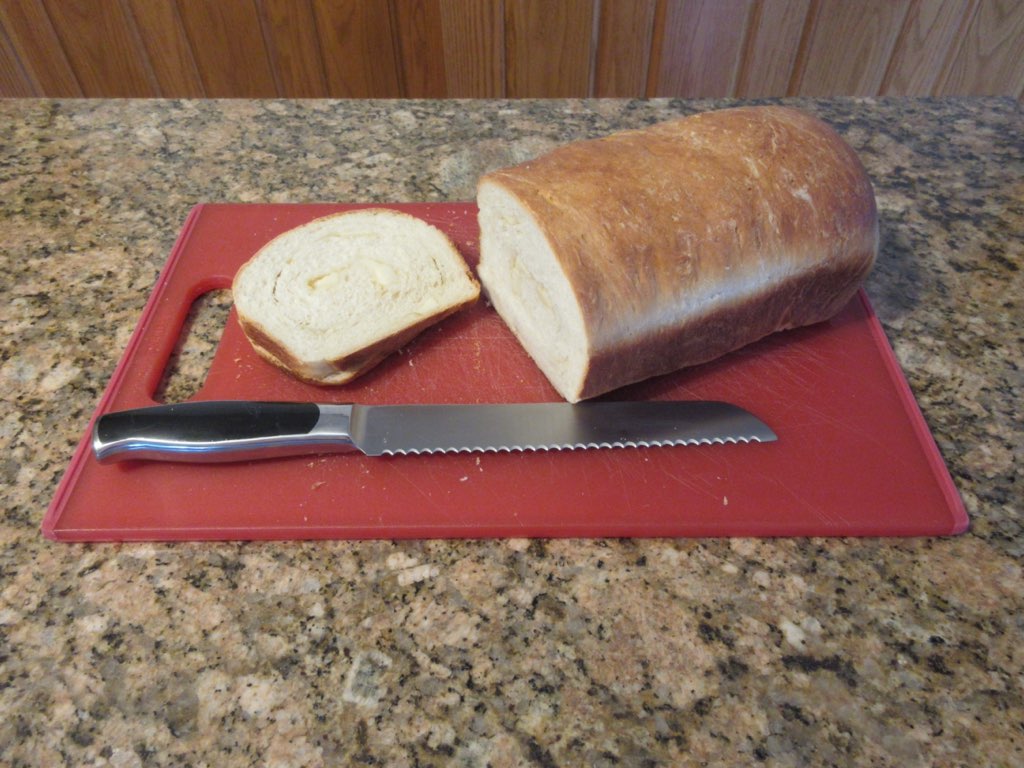
Isn’t this a lovely bread? 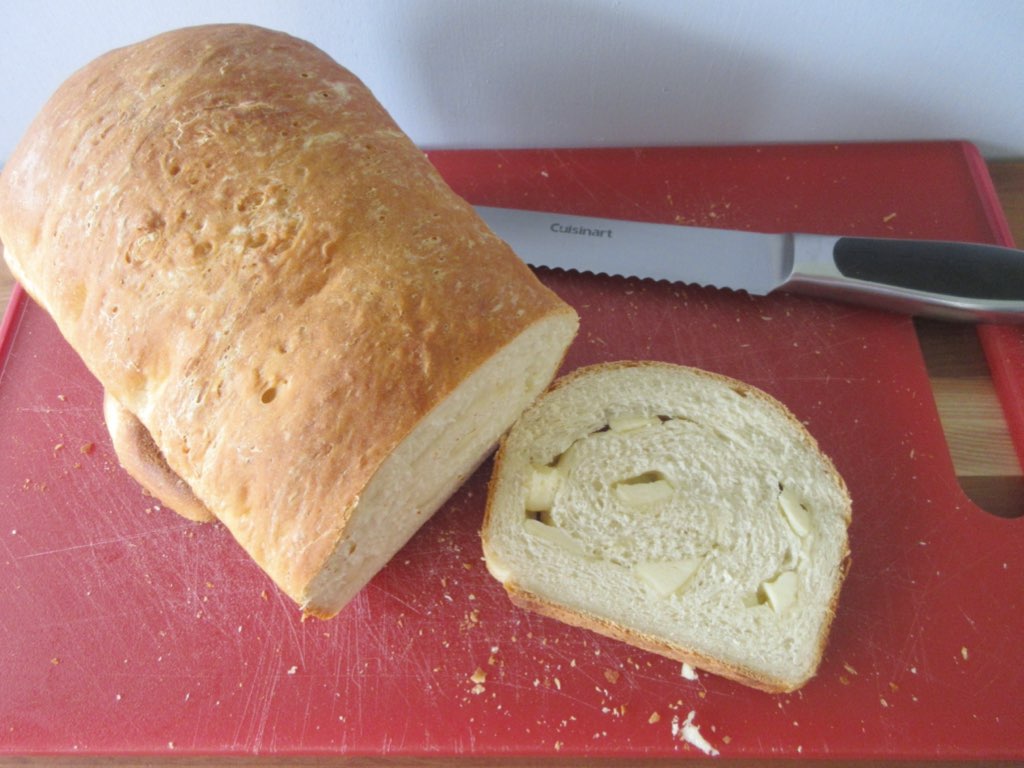
Some pieces will have tons of asiago! 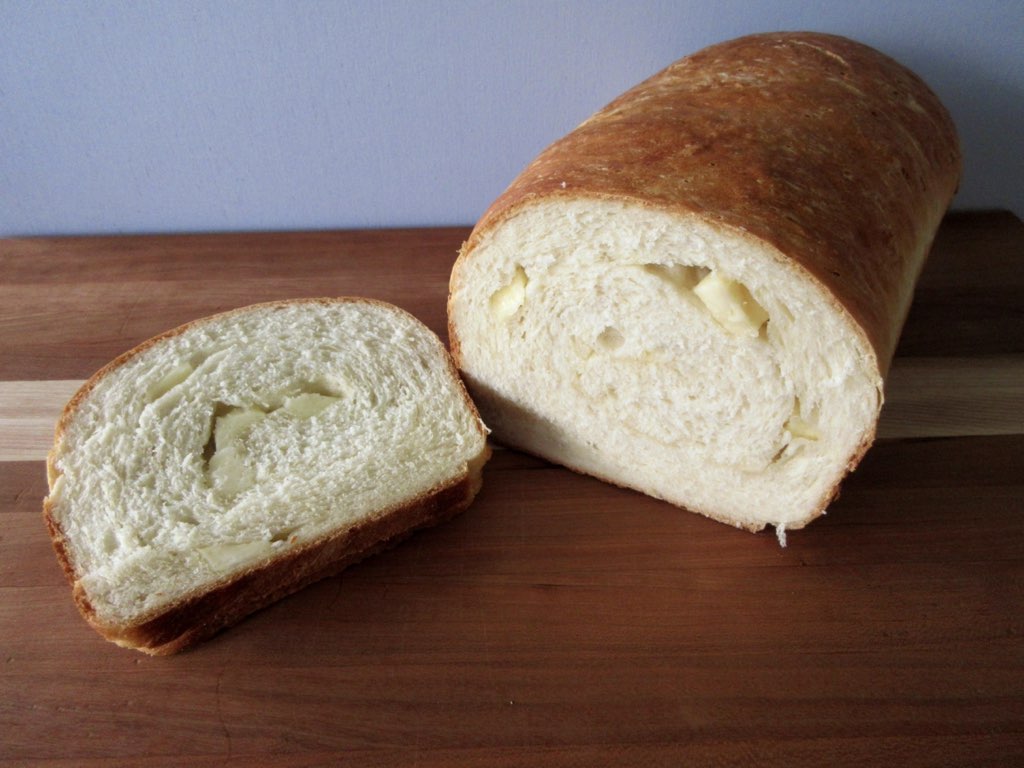
The ends will have a little less. 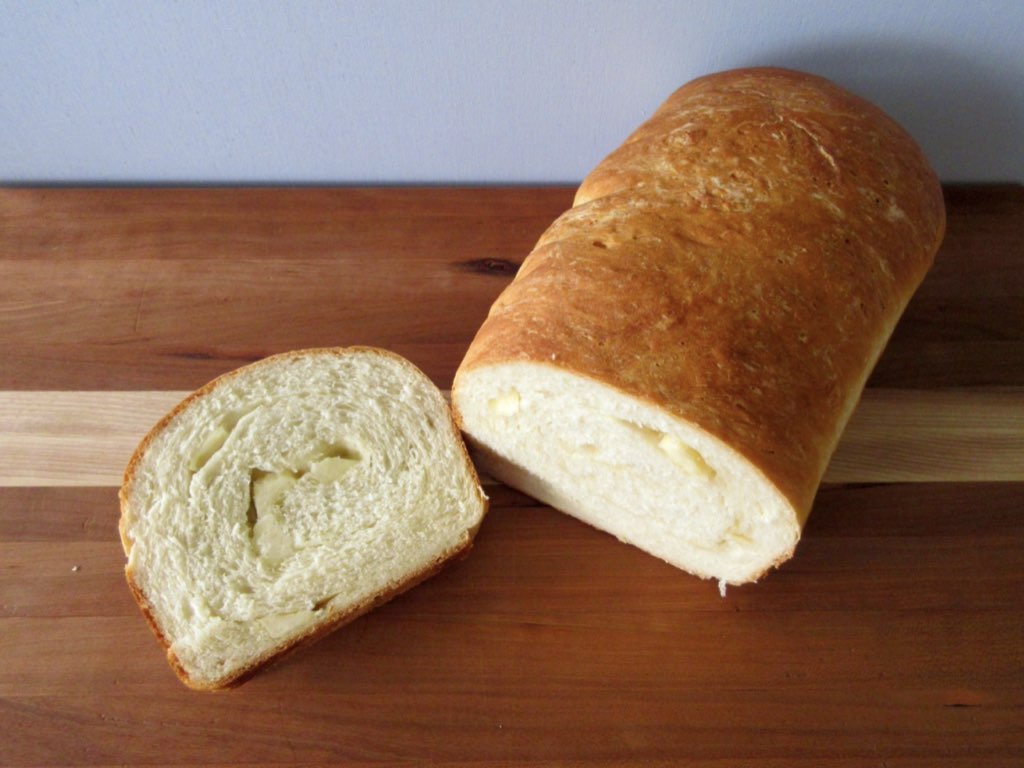
Happy baking!
Troubleshooting that Crust
Many breads are baked at at least 400F (220C.) Lean doughs like French loaves and sourdough love and can take the heat over enriched doughs like cinnamon rolls and this asiago bread. Lean dough is a combination of flour, water, salt and yeast. Enriched doughs have sugars and fats added for elasticity and softness. Lean doughs are more chewy and crisp on the outside and enriched are soft and tender.
Because of the Maillard reaction, discussed in this caramel recipe, the crust of enriched doughs will start browning at a much lower temperature. This is due to the fats and sugars in the recipe. If baked at a high temperature, most enriched doughs will darken too much or burn before the inside of the bread is finished. Not paying attention to what I was doing, I automatically switched the oven to a high temperature as we typically eat lean bread. This gave me an opportunity to show you what happens in an enriched dough if you bake at too high of a temperature.
Learn from my mistake! Enriched doughs are best baked around 325 – 375F (160 – 190C.) Lean doughs should start out at 400F (220C) and can take that heat. If you fail to do this, check out the photos below to see what will happen to your asiago cheese bread. Isn’t it a lovely brown?
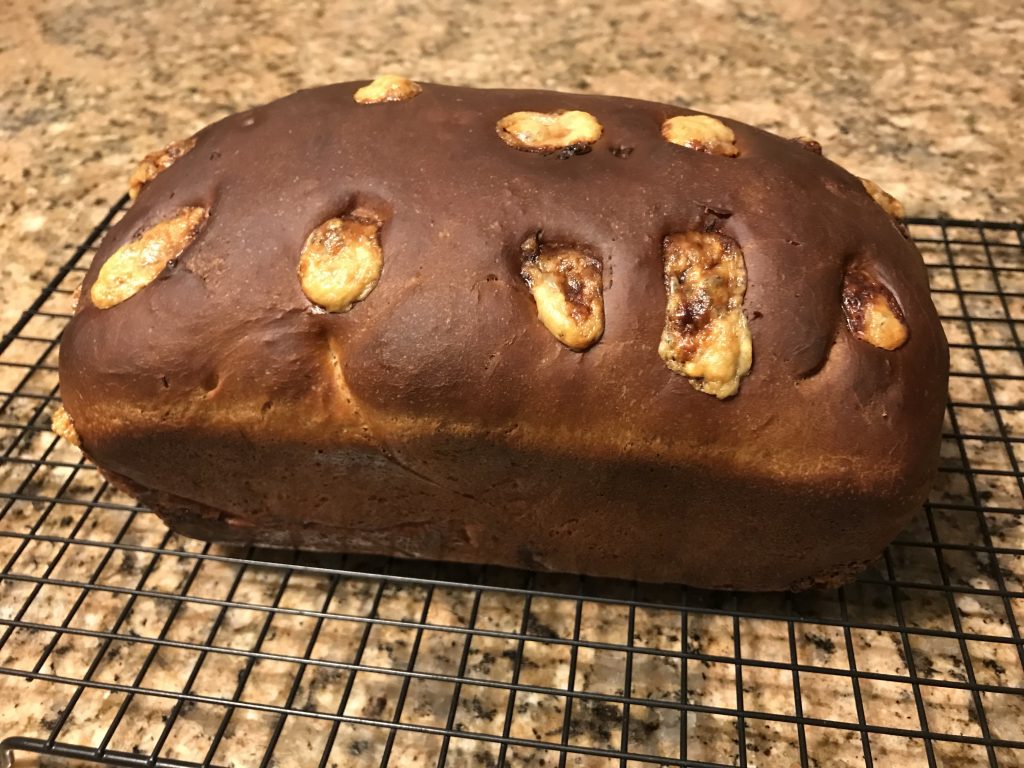
Baking too high of a temperature will cause the crust to darken too quickly. 
The bread will still be delicious, but the cheese and crust will have a burnt taste to it. 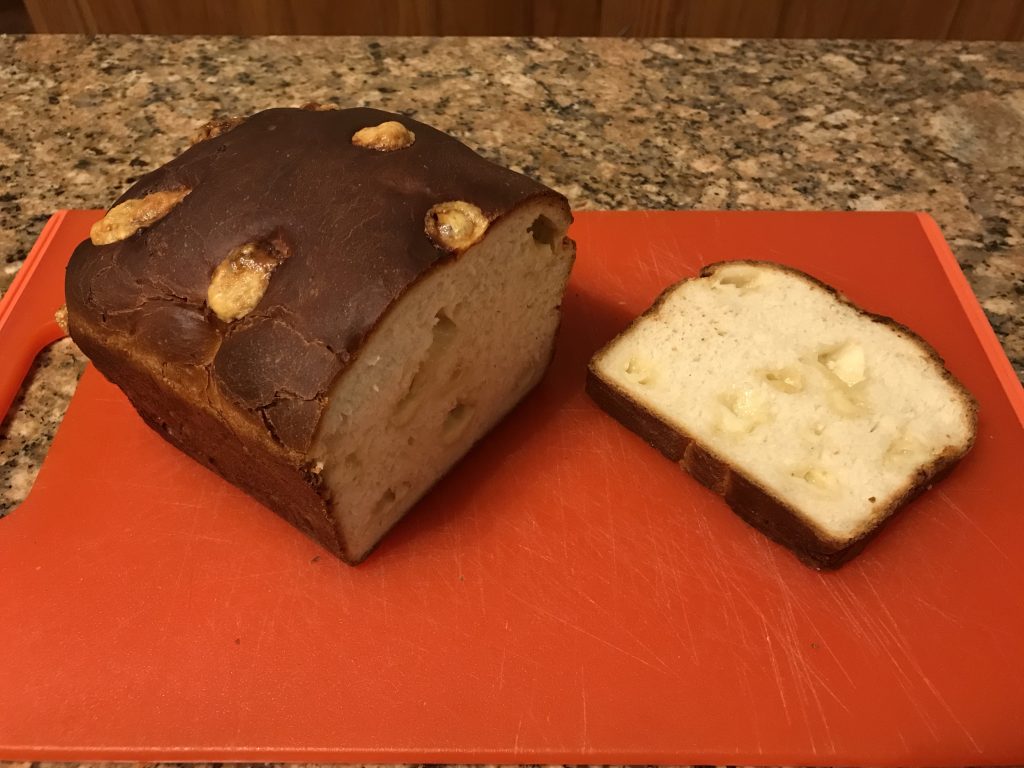
For enriched doughs, it’s better to bake at a lower temperature.
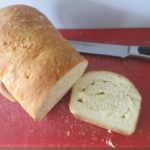
Asiago Cheese Bread
Ingredients
- 3 ⅓ cups (500g) flour
- 1 ⅓ cups (320mL) room temperature buttermilk
- 1 cup (113g) shredded asiago cheese
- 2 tbs (25g) sugar
- 1 tbs (15mL) oil
- 2 tsp (7g) yeast
- 1 tsp (5g) salt
Instructions
- Stir together buttermilk, sugar and yeast, set aside.
- In a large bowl, mix together flour and salt. Add in oil and buttermilk mixture. Stir until a shaggy dough forms.
- Knead by hand on a work surface or in a stand mixer until smooth and elastic, about 8-10 minutes.
- Return to bowl, cover and allow to rise 60-120 minutes or until double in size.
- Prepare a 9×5 (23x13cm) loaf pan by lining with parchment or lightly oiling and flouring if it's not a non-stick pan.
- Flatten dough on a clean surface into a rough rectangle about 8×13" (20x33cm.)
- Sprinkle the top of the dough with asiago cheese. Roll the dough into a log from the 8" (20cm) side and place dough inside pan seam side down.
- Cover with plastic wrap and let rest 60 minutes. The dough should reach the top of the pan when ready for baking.
- When there is 15-30 minutes left in the rise, preheat oven to 350F (180C.)
- Bake 35-45 minutes or until crust is a golden brown. Center of bread should read 190F (88C.)
- Cool completely before cutting.
0 Comments